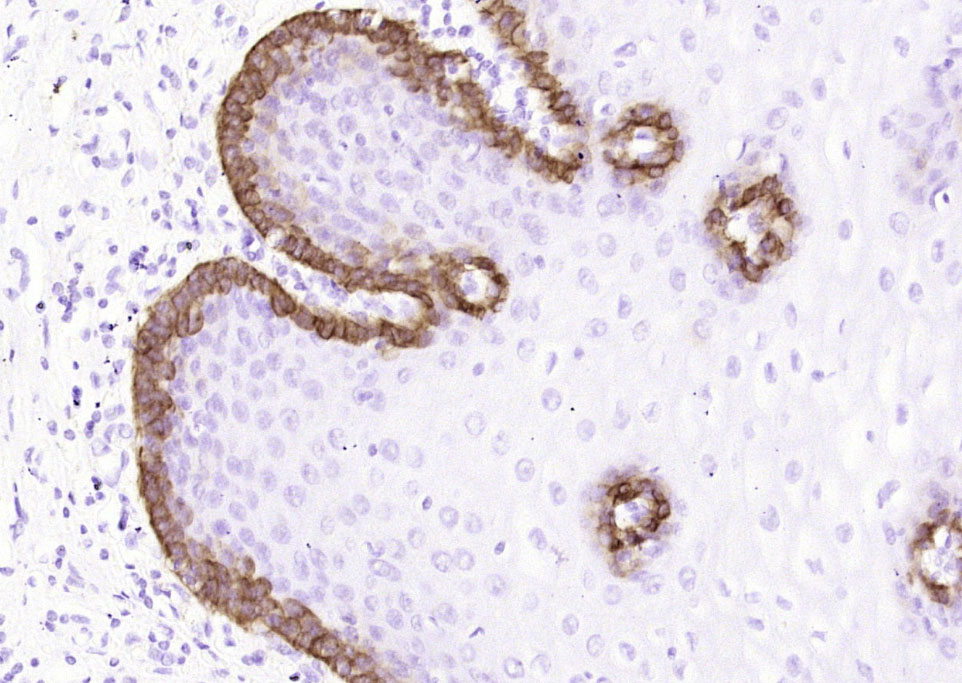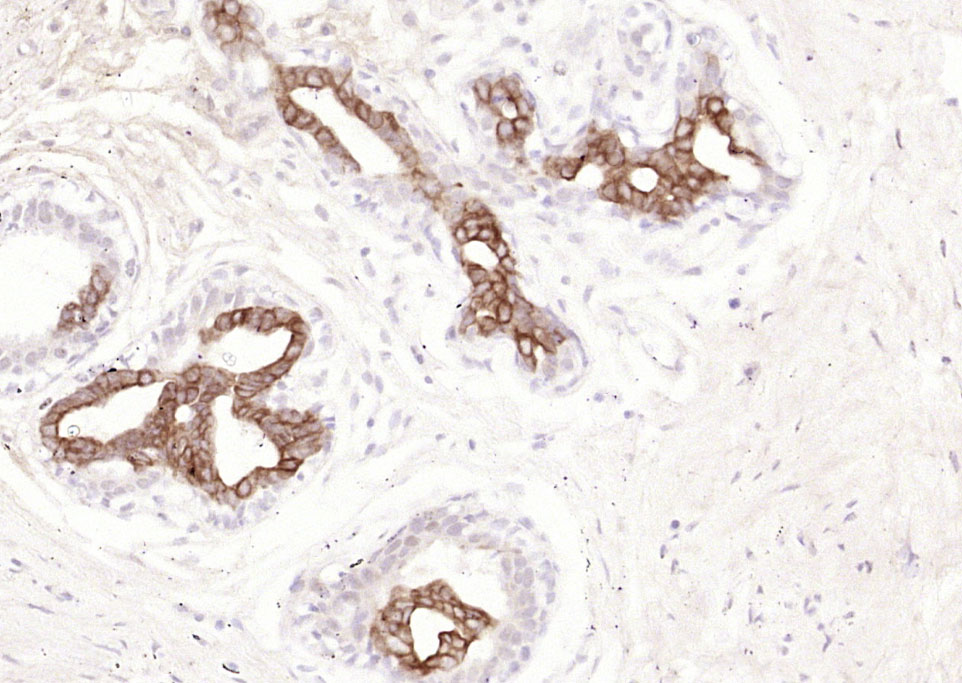
Mouse Anti-Cytokeratin 15 (ready to use)antibody (BH0201)
View History [Clear]
Details
Product Name Cytokeratin 15(ready to use) Chinese Name 细胞角蛋白15单克隆抗体(工作液) Research Area Tumour Cell biology immunology Signal transduction Cytoskeleton Immunogen Species Mouse Clonality Monoclonal Clone NO. 3H5 React Species Human, Applications IHC-P=1:100-500 IHC-F=1:100-500 ICC=1:100-500 IF=1:100-500 (Paraffin sections need antigen repair)
not yet tested in other applications.
optimal dilutions/concentrations should be determined by the end user.Theoretical molecular weight 49kDa Cellular localization The nucleus cytoplasmic The cell membrane Form Liquid immunogen KLH conjugated synthetic peptide derived from human Cytokeratin 15 Lsotype IgG1 Purification affinity purified by Protein G Buffer Solution 0.01M PBS(pH7.4) with 1% BSA and 0.1% Proclin300 Storage Store at 2-8 °C for one year. Avoid repeated freeze/thaw cycles. Attention This product as supplied is intended for research use only, not for use in human, therapeutic or diagnostic applications. PubMed PubMed Product Detail The protein encoded by this gene is a member of the keratin gene family. The keratins are intermediate filament proteins responsible for the structural integrity of epithelial cells and are subdivided into cytokeratins and hair keratins. Most of the type I cytokeratins consist of acidic proteins which are arranged in pairs of heterotypic keratin chains and are clustered in a region on chromosome 17q21.2. [provided by RefSeq].
Subunit:
Heterotetramer of two type I and two type II keratins.
Subcellular Location:
Expressed in a discontinuous manner in the basal cell layer of adult skin epidermis, but continuously in the basal layer of fetal skin epidermis and nail. Also expressed in the outer root sheath above the hair bulb in hair follicle (at protein level). Expressed homogeneously in all cell layers of the esophagus and exocervix, but detected in the basal cell layer only of oral mucosa, skin and in the basal plus the next two layers of the suprabasal epithelium of the palate.
Similarity:
Belongs to the intermediate filament family.
SWISS:
P19012
Gene ID:
3866
Database links:Entrez Gene: 3866 Human
Entrez Gene: 16665 Mouse
Omim: 148030 Human
SwissProt: P19012 Human
SwissProt: Q61414 Mouse
Unigene: 654570 Human
Unigene: 440010 Mouse
Unigene: 153568 Rat
Product Picture
Partial purchase records(bought amounts latest0)
No one bought this product
User Comment(Total0User Comment Num)
- No comment




 +86 571 56623320
+86 571 56623320




